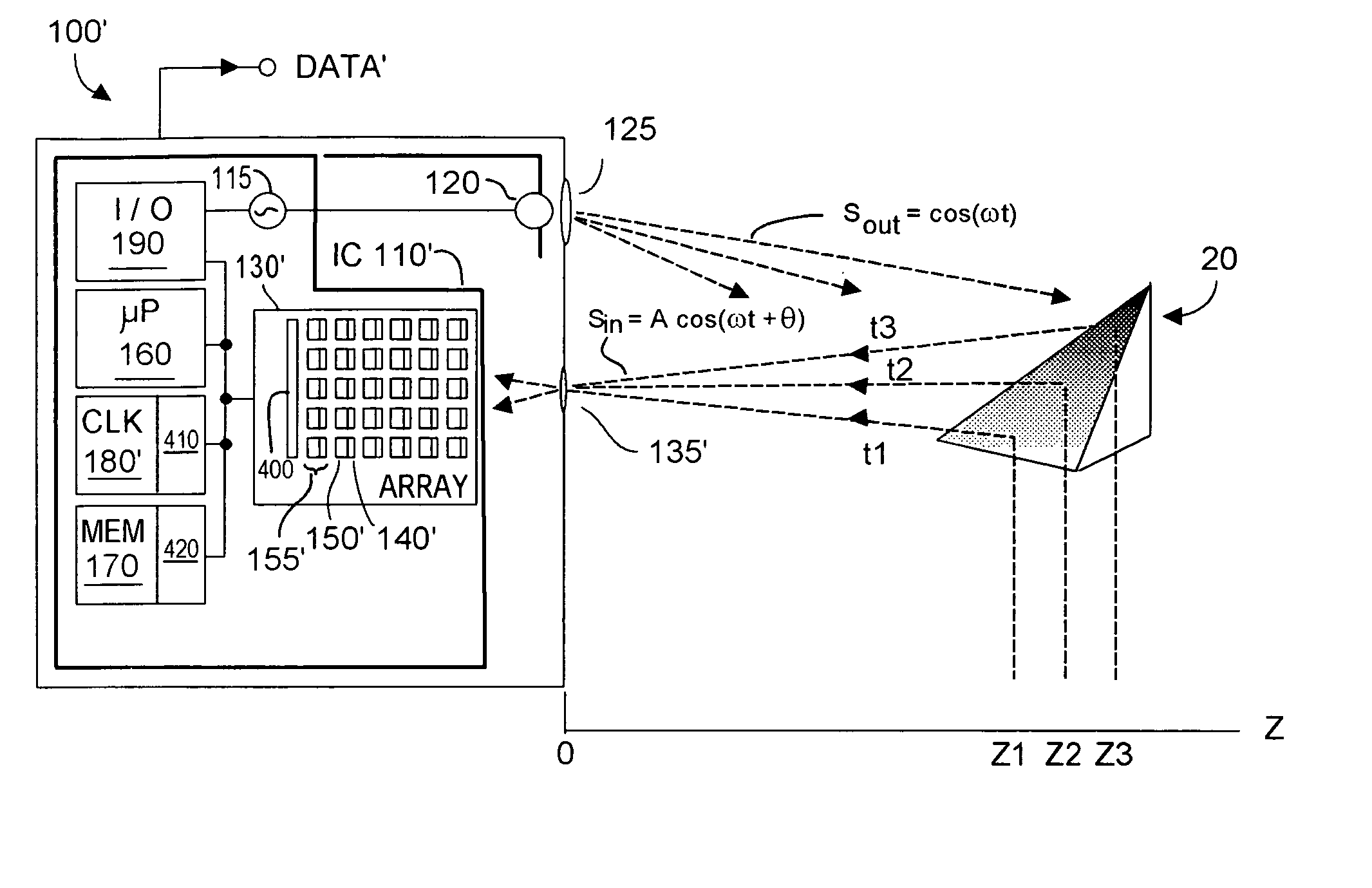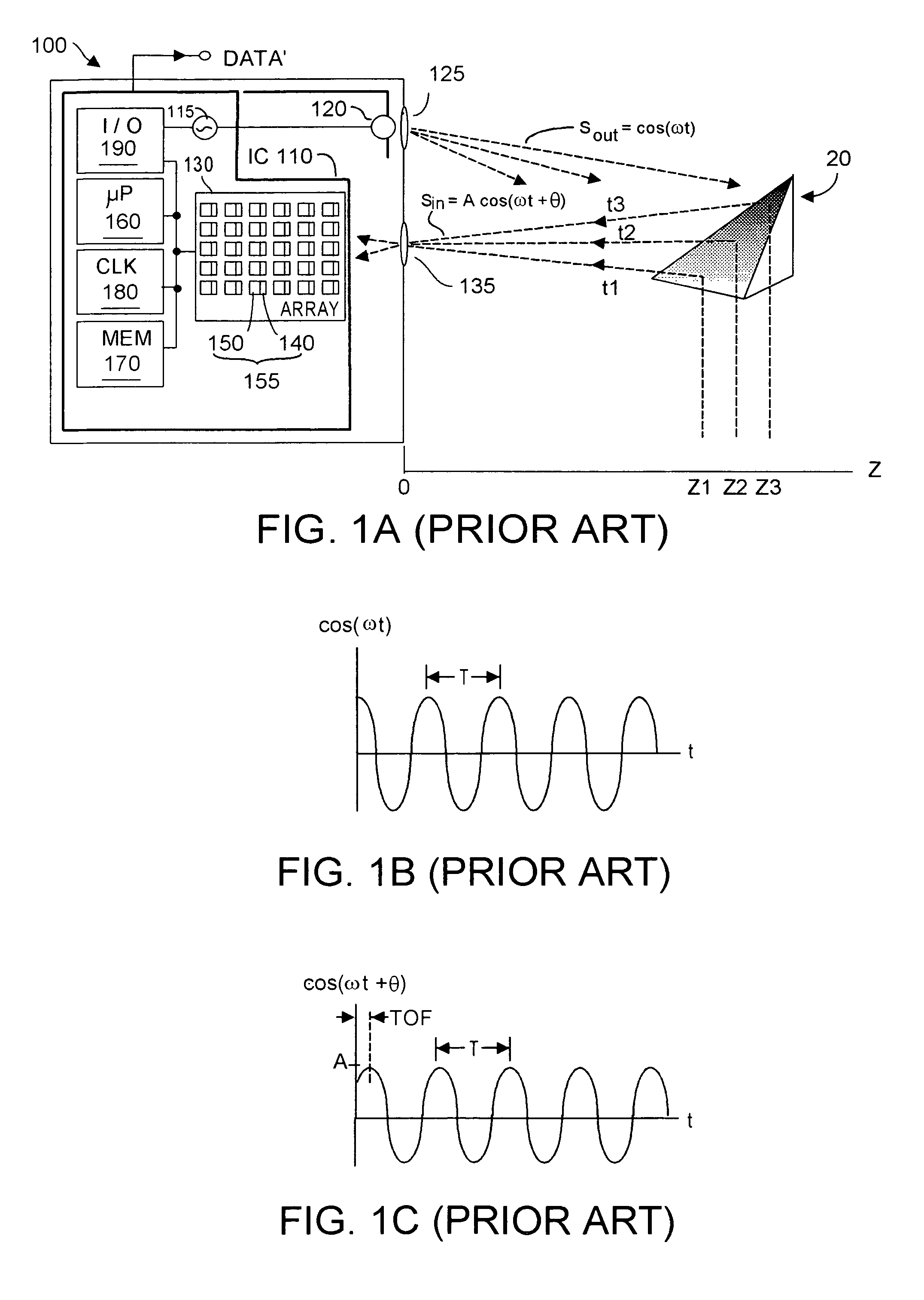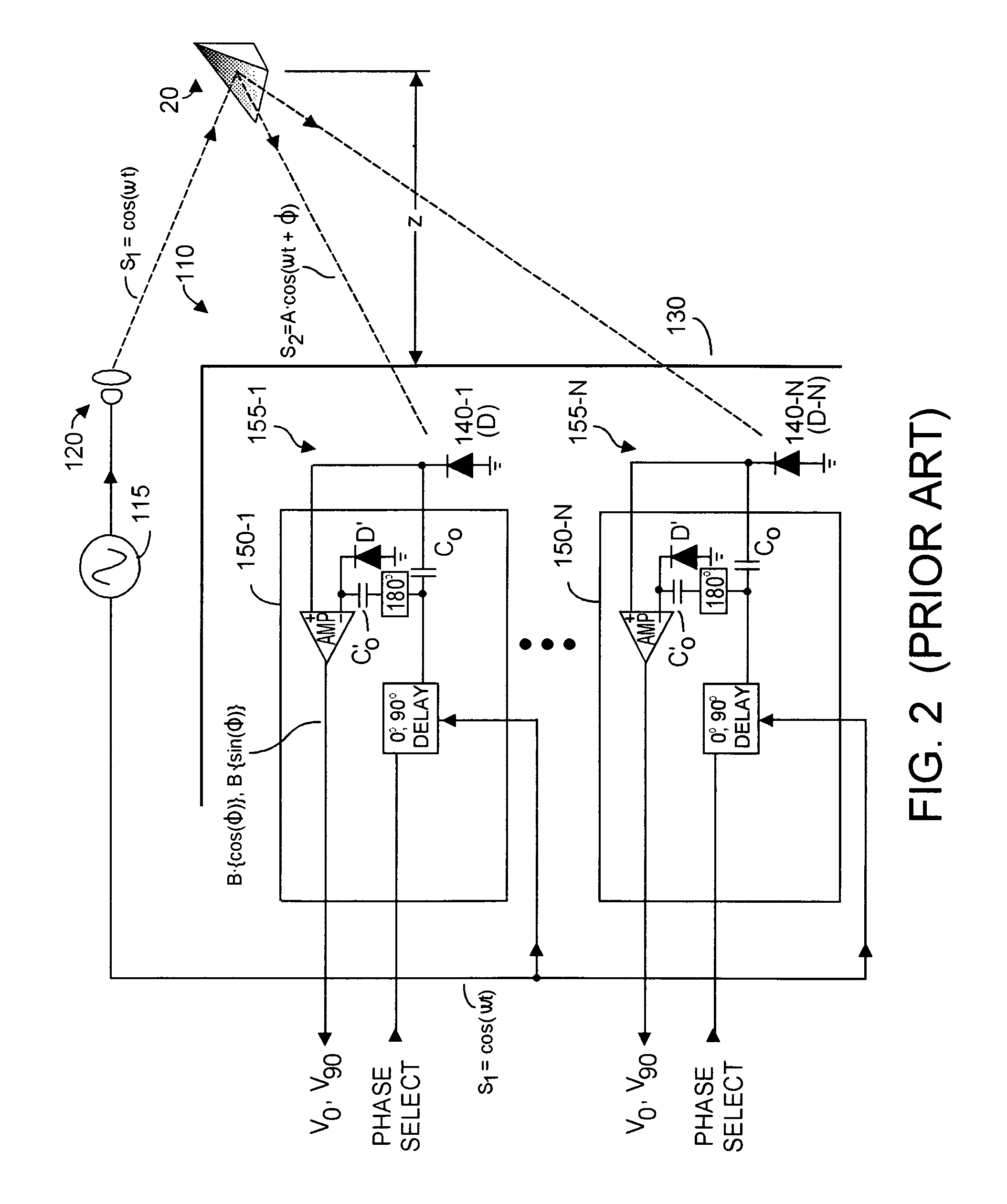System architecture design for time-of-flight system having reduced differential pixel size, and time-of-flight systems so designed
a time-of-flight system and differential pixel technology, applied in distance measurement, instruments, surveying and navigation, etc., can solve the problems of increasing the complexity of asynchronous reset, reducing the array region of ic chip area required to fabricate or implement pixels, and substantially no capacitor or component mismatch effect of the accuracy of res
- Summary
- Abstract
- Description
- Claims
- Application Information
AI Technical Summary
Benefits of technology
Problems solved by technology
Method used
Image
Examples
Embodiment Construction
[0082]FIG. 8 depicts a generic TOF system 100′, designed according to embodiments of the present invention. Preferably the area size required to implement individual pixels 155′ within array 130′ on IC chip 110′ is reduced relative to prior art pixels described earlier herein. Note too the reduced size of optical system 135′ as compared with optical system 135 in FIG. 1A. The smaller pixel size in array 130′ in FIG. 8 can result in thinner and smaller diameter optics 135′.
[0083]System 100′ in FIG. 8 benefits from reduced pixel area size by advantageously intelligently off-loading or removing from within the pixel certain circuitry, components, and / or functionality that in the prior art would be present in each dedicated detector electronics. In FIG. 8, 150′ denotes the reduced-area electronics associated with each detector 140′ in the array. In FIG. 8, block 400 denotes the off-loaded circuitry, components, and / or functionality that would otherwise be present in the dedicated electr...
PUM
 Login to View More
Login to View More Abstract
Description
Claims
Application Information
 Login to View More
Login to View More - R&D
- Intellectual Property
- Life Sciences
- Materials
- Tech Scout
- Unparalleled Data Quality
- Higher Quality Content
- 60% Fewer Hallucinations
Browse by: Latest US Patents, China's latest patents, Technical Efficacy Thesaurus, Application Domain, Technology Topic, Popular Technical Reports.
© 2025 PatSnap. All rights reserved.Legal|Privacy policy|Modern Slavery Act Transparency Statement|Sitemap|About US| Contact US: help@patsnap.com



